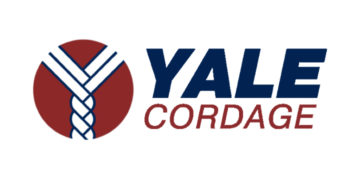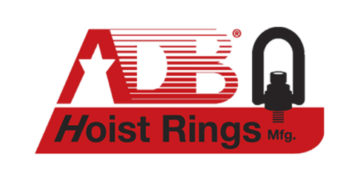
The same people and location with more products and better service!
Products & Services:
Top Vendors:




















Mazzella Companies Acquires John Sakach Company!
CLEVELAND, OH – Mazzella Companies is pleased to announce the acquisition of John Sakach Company of St. Louis. This acquisition further strengthens Mazzella’s footprint in the Midwest and Central regions of the U.S. It also reinforces Mazzella’s commitment to be a one-stop provider for rigging equipment and sling assemblies, engineered lifting solutions, training, and the inspection and repair of cranes, hoists, and rigging.
With roots dating back to 1958, John Sakach Company has exemplified prompt service and total quality commitment for more than 60 years. John Sakach Company has been servicing and supplying customers in the St. Louis area and beyond since 1986 with crane rigging equipment, crane rigging supplies, wire rope, lifting slings, and a variety of rigging inspection and training services.
“John Sakach Company is recognized as a leader within the rigging industry because of their strong partnerships with their vendors, their dedication to educating the industry, and their commitment to the highest quality and safety standards. John Sakach Company and Mazzella are both committed to offering the highest quality and variety of products, excellent service, and leadership in education and training within the industry,” said Tony Mazzella, CEO of Mazzella Companies.
Effective immediately, John Sakach Company will operate as Mazzella John Sakach Co. Terms of the transaction are not being disclosed.
“With decades of family tradition in the rigging and lifting industry, it is only fitting that John Sakach Company partners with Mazzella Companies to expand on the high commitment to quality our customers have come to expect over the years. We are excited to join a team dedicated to constant improvement within the rigging industry and look forward to continuing the Mazzella family legacy in the Midwest,” said Terry Driscoll, President of John Sakach Company.
“I extend a warm welcome to our newest team members as they become part of the Mazzella Companies organization. Together, we will uphold our commitment to provide the experience and exceptional service that our customers and team members rightfully deserve,” added Tony Mazzella.
Questions? Here’s Everything You Need To Know About This Change!
We’ve changed our name from John Sakach Company to Mazzella. Aside from the new name and logo, our member experience is virtually unchanged. Here are some common questions and answers related to this change.
When did John Sakach, Co. become a Mazzella Company?
In 2023, John Sakach Company was acquired by Mazzella Companies to expand lifting and rigging products and services in the Midwest and Central Regions—specifically in Illinois and Missouri.
With our customers in mind, Mazzella Companies has decided to consolidate all of the rigging brands under one name, “Mazzella”.
Who is Mazzella Companies?
In 1954, James Mazzella founded Mazzella Wire Rope & Sling Co. in Cleveland, OH. For over 70 years, the company has grown organically by nurturing historic relationships, expanding its product offerings, and entering new markets through acquisition.
Today, Mazzella Companies is one of the largest privately held companies in the lifting and rigging industries. Since our humble beginnings, we’ve grown to over 900 employees with over 30 locations across North America. Our product offerings have expanded from basic rigging products, to include:
- Overhead crane fabrication
- Crane and hoist service and repair
- Engineered lifting devices
- High-performance crane ropes
- Lifting and rigging training
- OSHA mandated inspections
- Fall protection solutions
- Sheet and coil for metal roof systems
- Metal rollforming machinery
One thing that hasn’t changed is our commitment to a no-excuses, customer-first mentality that extends from the shop floor to the front office. Some of the major markets Mazzella serves are: Mining, Steel, Oil & Gas, Construction, Energy, Shipbuilding, Vehicle and Durable Goods. Mazzella’s diverse portfolio includes Sheffield Metals a manufacturer and distributor of coated bare metal products for engineered metal roof and wall systems. New Tech Machinery is a manufacturer of portable roof panel and gutter machines—recognized as the world’s finest portable rollformers.
What has changed?
Just the name. We want to be clear that our people, locations, products, and services have not changed. We will be moving to the Mazzella name for all rigging brands under the Mazzella Companies umbrella in order to create a better experience for our customers and employees.
How does this affect me as a customer?
With all the Mazzella rigging locations working as one team and under one name, your level of service and support will be improved exponentially. Nothing will change in terms of the local team you’re used to working with. The same people will still be here—the only thing that will be changing will be the name of the organization they work for. You now have more resources, inventory, and clearer lines of communication. Our goal is to improve your experience and instill confidence and comfort in every interaction.
Why did the name change?
Mazzella is experiencing rapid growth. With this growth, we can better serve our customers as one team under the Mazzella name, versus many companies operating independently. The only change you will experience will be better service and improved lines of communication between our people and yours.
Can I order the same products?
Yes. We will still offer all the same products and services. Mazzella will always be your one source for lifting and rigging products.
Will I still have the same level of service?
For sure! We hope to expand our service line across the entire United States. With over 30 locations, your level of service should only be improved and lines of communication more clear.
Do I have to do anything?
No. Aside from the name change, it is business as usual!
GRANITE CITY, IL
30 Central Industrial Drive
Granite City, IL 62040
Toll-Free: 800-886-2907
Phone (Missouri): 314-867-0920
Phone (Illinois): 618-451-2907
Fax: 618-451-4213

